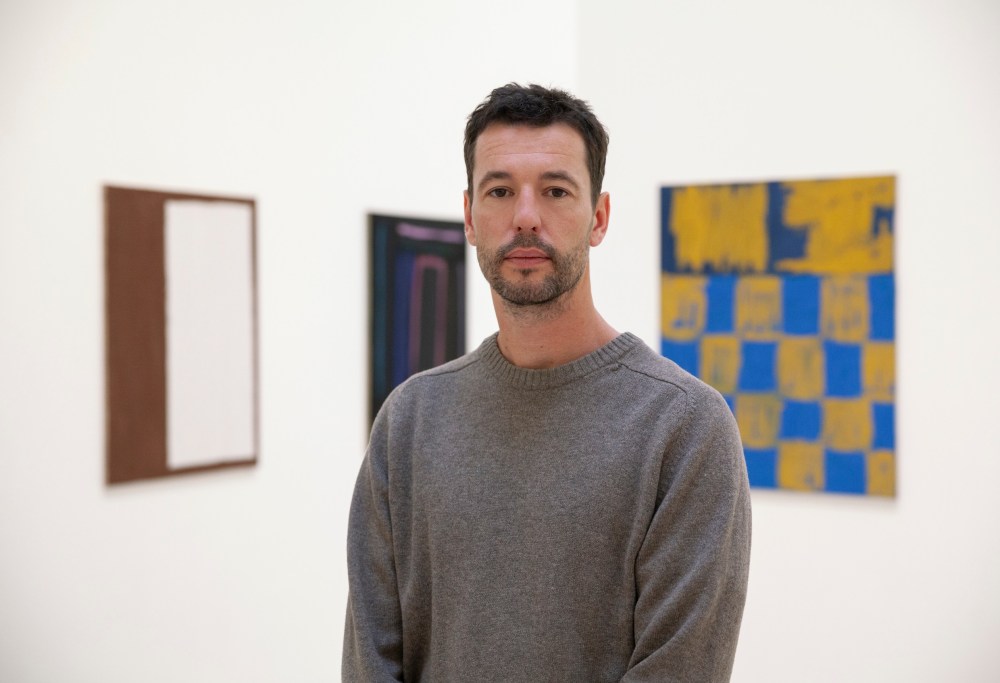
Emanuel Seitz.
Born 1973 in Dingolfing, Germany | Lives and works in Munich, Germany.
Emanuel Seitz focuses on the basic elements of painting, form, and composition. Although many of his paintings are simple and monochromatic in their vocabulary, they are not Color Field paintings, in his opinion. He sees them more like studies of the synergy between form and spatiality. The artist mixes his pigments to broaden the spectrum of hues at his disposal to bring out the essence of form with maximal intensity.
Seitz paints on rough burlap, which enables the use of very thin paint. Painting on burlap is like painting on wood: the paint stays fixed in one place and does not run. Seitz is also fond of the color of burlap: the dark shade of the fabric immediately changes the painting’s color temperature. The size of the brush is also decisive: Seitz selects the brush to match the dimensions of the canvas. It is important to him that the structure and width of the brush are visible in each stroke he applies. Seitz’s preferred direction of movement is always from left to right. The artist mixes his own pigments, which enables a wider spectrum of color nuances. For Seitz, color must reinforce form as intensely as possible.
Emotion is not his main priority when Emanuel Seitz paints. Only after the painting is finished does he think about the feelings it conveys. He describes his approach to painting as calming. The process is unburdened of constraints such as composition and structure, and all that matters is the freedom to paint. The painting itself is also a journey – a journey whose duration is decided fully by the artist. Although Seitz does not paint recognizable scenery, his paintings are reminiscent of abstract landscapes.
The colors define the space, and the composition depends on how many colors I put on the canvas. I give each color a good position in the most brilliant way for itself.
Emanuel Seitz studied under Günther Förg at the Munich Academy of Fine Arts from 1996 to 2002. He has exhibited in numerous solo and group exhibitions in Germany and elsewhere throughout Europe. He is represented in significant collections, including the Lenbachhaus and the Pinakothek der Moderne in Munich. Seitz divides his time between Munich and Berlin.

Emanuel Seitz exhibition 2023.